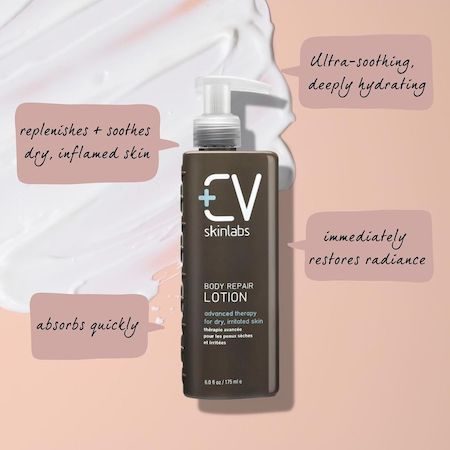If you’ve ever suffered from red and irritated skin after a bikini wax, you know how uncomfortable it can be. Especially if you have sensitive skin!
Understanding why this happens and how to deal with it can make the post-waxing experience more comfortable.
Red and irritated skin after bikini waxing: why does this happen?
Those ugly and uncomfortable red spots appear due to the following factors.
Hair removal
Waxing removes hair from the root. Although it is a common experience for us, it is a traumatic experience for the skin, especially in sensitive areas such as the bikini line. Pulling out the hair temporarily damages the hair follicles around the skin, which can trigger a cascade of inflammatory responses. This leads to redness, bumps and sometimes a rash.
Incorrect technique
The way the waxing is done can also make a difference in how your skin responds. If not done correctly, it can lead to skin damage and subsequent redness, burns, infections, pigment changes and even scarring.
For example, if you or the esthetician pull the strip too forcefully or in the wrong direction, it could cause more damage than necessary.
Type of wax used
Whatever wax you use, if you have reactive or allergic skin, make sure the wax does not contain allergenic ingredients. Chemicals in the solution can contribute to contact dermatitis. That is why it is wise to always do a patch test first.
There are different types of wax available for hair removal. Choosing the right type of bikini wax can mean the difference between a comfortable and irritating post-wax period. Traditional waxing methods, such as strip waxing, involve applying a thin layer of wax and then removing it with a strip. This may be too harsh for delicate and sensitive skin.
It may be better to use hard wax or stripless varieties, as these adhere more to the hair than to the skin. Its use can result in less trauma to the hair follicles and therefore less redness and inflammation afterwards.
Red and irritated skin after bikini waxing: how to prevent it
You may not be able to completely prevent irritation, but you can help reduce negative effects and promote a faster recovery by following these steps.
Choose the right product (wax)
The wrong type of wax can increase your chances of experiencing irritation, especially if you have sensitive skin. Choose a product made for sensitive skin – cream-based formulas work well – or talk to your esthetician about your concerns before the appointment. Tell the technician what you are allergic to.
If you’re waxing at home, avoid formulas that contain artificial colors, fragrances, and harsh chemical ingredients. Make sure your skin is clean and dry before you start. Then apply the wax in the direction of hair growth and remove it in one quick motion in the opposite direction. If the wax needs to be heated, make sure it is not too hot to avoid burns.
Care for sensitive skin
If you have eczema, psoriasis or other skin conditions, you should take extra precautions. If you have sensitive or eczema-prone skin, you may be more prone to irritation after waxing. If you are having the waxing done professionally, ask about the products used and make sure you feel comfortable with the esthetician’s knowledge before proceeding.
Preparation (exfoliation and cleansing)
Exfoliating regularly a few days before waxing can help remove dead skin cells and reduce the chance of ingrown hairs after waxing. However, use gentle products. Avoid exfoliating immediately before waxing (and never immediately after waxing) as this can make your skin feel more sensitive, weaken the skin barrier and cause potential problems.
Before waxing, cleanse the skin with a gentle cleanser to remove any dirt, oil or bacteria. Do not apply lotion before waxing.
If your hair is long, cut it to about half an inch before waxing. This ensures better adhesion of the wax and reduces discomfort during the process.

Red and irritated skin after bikini waxing: how to treat it
Freshly waxed skin is super sensitive. It is essential to treat your skin gently. Be sure to use soothing ingredients to soothe, soothe and help heal the skin. After waxing on sensitive skin, it is prone to redness, irritation, bumps and pigment spots. It is therefore important to care for the skin carefully.
If you develop red spots, redness, irritation, or rash after waxing, follow these steps to soothe it.
Cool it down
If your skin is red, hot, stinging and inflamed, the first step is to cool it down. If you have time, you can apply a cold compress. If not, spray on some of our Rescue + Relief Spray and reapply as necessary. This is a soothing, heat removing and redness reducing spray that also softens the skin.
Apply Aloe Vera
Did you know that the ingredients of our Rescue & Relief Spray are mixed in an aloe emulsion? Known for its soothing properties, aloe can provide relief from redness and irritation while providing the hydration the skin needs.
Freshly waxed skin can feel raw and soft. Mist the affected area with this no-touch spray. It is perfect for instant relief from burning, redness, irritation, itching or stinging. It is non-comedogenic and has natural anti-inflammatory and antibacterial properties, meaning it won’t contribute to bumps or pimples. We are proud to say that this Rescue + Relief Spray is often recommended by dermatologists and has won multiple awards for the best after-skin pacifier!
Avoid irritants
While your skin is healing, avoid using products that contain harsh chemicals or fragrances. These can further irritate your skin. Stick to gentle, fragrance-free, non-comedogenic, and hypoallergenic products to promote healing.
Gently clean the waxed area with a mild, non-irritating cleanser to keep it clean and free of bacteria. Avoid using harsh soaps or scrubs that can further irritate sensitive skin.
It is essential to have the right care after waxing for the smoothest, hassle-free results. Redness and irritation are normal, but sensitive skin can be extra vulnerable to irritation, bumps, pimples and flare-ups. It is important to use soothing ingredients to soothe the skin and help maintain and care for the skin as it recovers.
Hydrate
A clean hypoallergenic moisturizer like our Body Repair Lotion can help strengthen the outer layer of skin, promote faster healing and keep skin supple. It is specially designed to soothe, strengthen and hydrate the skin, helping to prevent dryness and flaking.
It also contains aloe, glycerin, beta-glucan/oats (gluten-free), St. John’s wort, and other natural skin-soothing and anti-inflammatory ingredients that can help tame redness and keep skin healthy and glowing all summer long.
If the skin is cracked and fissured, dermatologists recommend us Restorative skin balm: a staple in spas and waxing centers for post-waxing! It is a petroleum jelly-free, breathable, healing ointment that helps the skin heal quickly, reduce inflammation and protect against further irritation. Apply after misting with Rescue & Relief Spray.
Avoid tight clothing, sun, exercise
After waxing, tight clothing, friction or heat from activities such as sports can worsen skin irritation and lead to a red, burning rash or pimples and ingrown hairs. Rubbing, scratching, or sweating the area can further irritate the skin and make the skin more susceptible to bacteria or breakouts. Wearing loose-fitting clothing until the skin heals is the best approach.
After waxing, the skin is particularly vulnerable to ultraviolet radiation from the sun. Try to avoid the sun, but if you must, it’s crucial to apply sunscreen to the area to prevent more irritation and hyperpigmentation.
Do you suffer from irritation and redness after waxing?
Featured image by Armin Rimoldi via Pexels.






